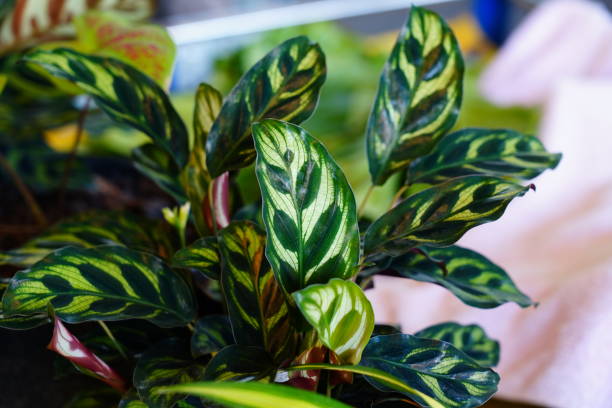How To Build A Rain Garden – A Complete Step By Step Guide To Make Own Rain Garden At Home

Building a rain garden is a great way to run off the rainwater into the garden and have a beautiful small flowery bed on the lawn throughout the year.
Making your own rain garden at home is also nurturing your yard with the beauty of nature and protecting the environment by channeling precious rainwater to the garden.
When rainwater reaches directly to the garden, it easily goes below the ground where it increases groundwater level as well as keeps the plants green.
In urban areas, it is noticed that most of the rainwater drains through the severe lines, which is a waste of water. Instead, you can channel the roof rainwater to the garden and make your garden look mesmerizing.
You may still be confused about what this rain garden actually is and how it works? In this article, we will talk about everything related to rain gardens and a step-by-step guide on how to build a rain garden at home.
What Is A Rain Garden And How Does It Work?
A rain garden is a landscape garden in which native plants, shrubs, flower plants, and perennials are planted by a small depression that formed a natural slope.
It is mostly built to hold and soak the rainwater from the roof, patios, lawn, and driveways of
your house.
One of the most important roles of a rain garden is that they help in absorbing 90% of the rainwater nutrients, removing chemicals, and hold 80% of the rainwater to get into the ground.
Basically, rain gardens do not look like a pond, wetland, or even not a water garden; it is like any other garden but designed to hold water during the rainy season.
Another important role of rain gardens is that they soak the water within 12 to 14 hours, which means they help prevent mosquitoes’ breeding.
How To Build A Rain Garden At Home
Now you have a better idea of a rain garden and its importance in your home. Here below, we are going to discuss how you can make your own rain garden with some tools and materials.
Material Needed To Build Rain Garden
- PVC Pipe
- Native Grass And Plants
- 1 ½ inch River Rock
- Landscape Fabric
- Decorative Boulders And Rocks
Tools Needed To Build Rain Garden
- Wheelbarrow
- Level
- Spade
6 Steps To Build Rain Garden

Step 1: Details Of Rain Garden
- Search a low spot in your yard and create a rain garden there. It would help if you built swales so that runoff from the elevated parts and gutter channel to rain garden.
- The network of the deep-rooted native plants absorbs the runoff rainwater. You can use different species of deep-rooted plants so that your rain garden will look more colorful.
- Also, make sure to plant them accordingly with the dept of the rain garden.
Step 2: Find Right Location Of Rain Garden
- Check the slope of the yard using the leveler and with a longboard. No need to dig much to get a sloped garden, but a little slope is enough to drain the collected runoff rainwater and improve the drainage.
- Try to locate the rain garden where runoff water easily collects from driveways, low points, and downspouts.
- You can place an attractive rock or use an underground PVC pipeline of 4 inches to channel water. In case your garden is 30 ft more than the downspout, the PVC pipe is better for perfect water flow.
- Make sure to locate the rain garden at least 10 ft. away from the foundation of the house otherwise soil may get saturated
- Also, make an overflow zone for big and stormy rain, little more sloped areas that channel away from the running water easily. Make sure that it should be located away from your house as well as from your neighbor’s house.
- Before you start the digging process, make sure it is not located above the tank or utility lines going through the underground. You can call 811 or your national number for marking the utility lines.
Step 3: Depth Of The Garden
- You need to calculate the depth and size of the garden on the basis of how quickly soil can absorb water. You have to check the garden for how much water it can absorb in 24 hours. Take a test by digging a small pit and fill it with water and watch the time. Then roughly calculate the time taken by the rain garden to soak the water according to the rain zone your house is built in.
- You have to dig the garden in the way that it can soak up all the water easily. In order to find ideal depth, you also need to check the porosity of the soil.
Step 4: Size Of The Rain Garden
- The size of the garden depends on the volume of water that gets collected during the rainy season. If your house is in the heavy rain zone, then the depth, as well as the size of the rain garden, should be good enough.
- For high rain zone regions, it is always better to have a big size rain garden as it will collect and soak up all the rainwater within the 12 hours. In case the soil porosity is good, then a small rain garden will also play a sufficient role.
Step 5: Selection Of The Plants
- Deep rooted plants are best for rain gardens like sedum, daylily, coneflower, sedge, iris, aster, and artemisia.
- You can also talk to experts for beautiful looking deep root plants so that you can grow different varieties of plants to make your garden look wonderful.
- These plants also play a major role in absorbing the water, so make sure to grow the deep-rooted plants.
Step 6: More Care For First Year
- You need to take care of the rain garden like a baby for the year. You have to put mulch on the garden for the maintenance of the plants as well as remove the weeds frequently.
- Decorative the garden with beautiful rock and boulders, you can also put big ceramic pots near the plants to make the garden look more exotic.
- You can also create a notch on the side of the rain garden so that extra rainwater flows away from the garden.
- You also need to water the rain garden during no rains for an inch every week. If you choose all the native plants, they can tolerate dry days for weeks. But for the first year, you have to keep care of your rain garden.
Also Learn: Best DIY Upcycled Garden Ideas
Final Words
Building a rain garden at your home is not a big task, but it can be challenging as you have to take care of everything.
Make sure not to forget crucial points while building the rain garden like depth, soil porosity, location, and it should not play damages to you as well as your neighbor’s house.
Also, a rain garden should have proper channels so that all the runoff collects there; otherwise, there is no such great use of building the rain garden.
I hope this article will help you in building the rain garden in a correct manner and you also enjoy the beauty of a special looking rain garden. Not only is there a great joy of beauty as well as a good feeling for protecting the environment also.
With this guide build your own rain garden and share it with your loved ones so that they can do the same.






